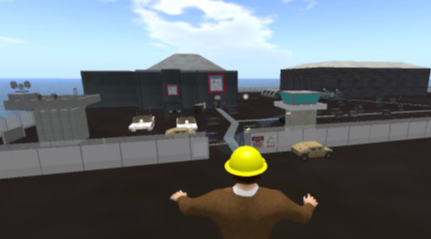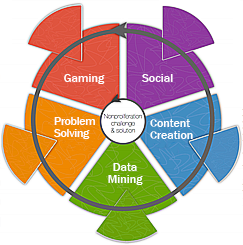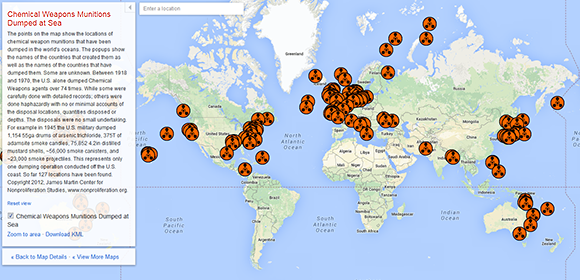Ferenc Dalnoki-Veress
Catherine Dill
Melissa Hanham
Bryan Lee
Jeffrey Lewis
Tamara Patton
New Tools and Uses for Disarmament Verification
The James Martin Center for Nonproliferation Studies and the Vienna Center for Disarmament and Nonproliferation are on the forefront using open source information and new technical tools to support nonproliferation and disarmament verification. Satellite imagery, 3-dimensional (3D) modeling, geospatial data, new media, and virtual reality applications are key strengths in this body of work. Such tools extend the ability of non-governmental organizations to identify and determine the capabilities of proliferation-related activities, to verify further reductions of nuclear weapons, track illicit transfers of technology, and break new ground in societal verification research. All of this enhances the ability of citizens worldwide to verify compliance with international arms control treaties.
Satellite Imagery & 3D Modeling
3D modeling allows CNS and VCDNP to derive new value-added data in the open-source domain. Beyond providing a more comprehensive characterization of a site or facility, 3D models enable new forms of analysis and discoveries. Researchers create models with commercial satellite imagery and ground images using modeling software such as SketchUp.
In 2012, Tamara Patton built 3D models of Pakistan’s Kushab reactors, allowing her to estimate plutonium production capacity for Science & Global Security. Jeffrey Lewis, Melissa Hanham, and Amber Lee prepared a piece for 38 North which used 3D models, crowdsourcing, and social media to locate two previously unknown facilities in North Korea used to build transporter-erector-launchers. Melissa Hanham teaches a course in 3D modeling and geospatial analysis for Master of Arts candidates at the Monterey Institute of International Studies.
Remote Sensing and Geo-Spatial Analysis
CNS and VCDNP are also engaged in examining emerging remote sensing and geospatial technologies for their potential to support solutions to verification challenges. The focus areas of this work are new satellites and sensors, new approaches for dealing with open-source geospatial data, and new software and techniques for satellite imagery analysis and 3D modeling. In addition to training the next generation of practitioners in this field, a key feature of this work is forging new connections between technology developers and the nonproliferation community.
For their work in this area, Anne Marie Steiger and Raymond Zilinskas won a prestigious award from Google Earth Outreach with an innovative map of chemical weapons munitions dumped at sea. Anne Marie and David Steiger produced and maintain a map of nuclear, chemical, biological, and missile facilities for the Nuclear Threat Initiative.
Simulation

View of the virtual facility developed using Opensim
Simulations in the virtual world offer useful practical training and memory aids for practitioners. The advantages of these technologies are that complicated and potentially dangerous scenarios can be carried out in an inclusive, cost-effective manner with little risk to safety or security.
CNS created the world’s first course in virtual dismantlement of nuclear weapons at the Monterey Institute of International Studies. Scientist-in-Residence Dr. Ferenc Dalnoki-Veress teaches “Nuclear Treaty Verification in a Virtual World,” where students simulate the dismantlement process by controlling avatars in a virtual facility. Students represent nuclear or non-nuclear weapons states, and operate entirely in the virtual world, with no knowledge of who their real-life counterparts are. Meanwhile, Tamara Patton is developing a different virtual reality environment using 3D modelling and a game engine for supporting nuclear disarmament system planning, procedural design, and simulation activities.
New Media

New media differentiates from the concept of social media in that it emphasizes that consumers are also producers, the media is free, and acts as a catalyst to its own creation. Its influence in the nonproliferation and disarmament sphere is rapidly evolving. In many ways, it duplicates traditional engagement and research. However, the digitization of vast amounts of data in the open-source, rapid interaction between stakeholders, and access to previously isolated information and communities give it almost limitless application.
Bryan Lee and Margarita Zolotova authored a ground-breaking piece for the US Department of State, which introduced the concept and methodologies of new media to the nonproliferation and disarmament communities, and shared new applications for societal verification including, data mining, crowdsourcing, gaming, problem solving, and societal engagement. Lee published a companion piece with Jeffrey Lewis and Melissa Hanham for DTRA’s Project on Advanced Systems and Concepts for Countering WMD (PASCC) which applied these concepts through a case study. CNS has also published several articles on new media and verification, including: “The CW Revolution will be Tweeted” and “Revisiting the Promise of Societal Verification in the Age of Social Media.”
The Global Video Library
Facilities
CNS and NTI are creating a video library of strategic nuclear and missile-related facilities around the globe. The videos feature original, professionally produced and meticulously researched 3D models of selected facilities profiled on the NTI website.
CNS’ regional and technical experts produce these videos by conducting open-source analysis of current and historical satellite imagery, ground imagery, videos, and first-hand accounts of the sites. The models are created using Trimble SketchUp and geo-located using Google Earth.
Missiles and Centrifuge Collections
CNS produces interactive 3D models of ballistic and cruise missiles and centrifuges for the NTI website. Visitors to the site can rotate, zoom, and orbit these missiles as they learn more about the technology.

